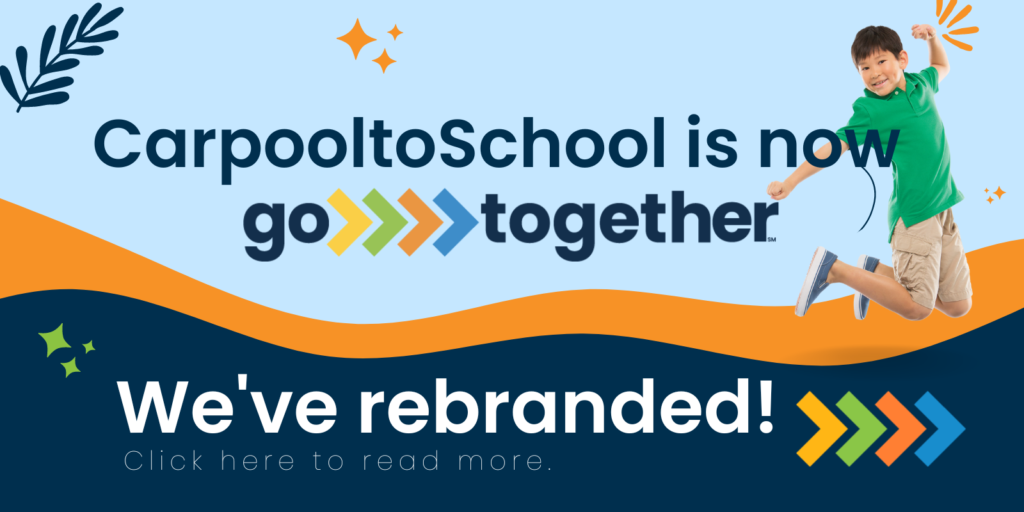In a recent episode of GoTogether’s podcast Intersections, Kimberly Moore, CEO and Garrison Grow, Safe Passage Team Lead hosted Phillip Burgoyne-Allen for two-part interview series. Burgoyne-Allen is a former policy analyst at Bellwether Education Partners. Jennifer Schiess, Partner, Bellwether Education Partners and Phillip co-authored Intersection Ahead: School Transportation, School Integration, and School Choice and Miles to Go: Bringing School Transportation into the 21st Century. Jennifer joined us recently to discuss the school transportation landscape.
During his time at Bellwether, he worked on education policy with a frequent emphasis on transportation efficiency and environmental impact. Currently, he works at AASHTO, the nonprofit association representing the departments of transportation in the 50 states, the District of Columbia, and Puerto Rico. At AASHTO, his work focuses on transportation and environment policy.
What does transportation equity mean?
Phillip Burgoyne Allen: “I lifted this from DeRay McKesson who is a notable, noted activist. He says, ‘equality means everyone gets the same, equity means everyone gets what they deserve, or gets what they need.’ So, to me, I see people facing all sorts of challenges when it comes to accessing public goods. And I really think of equity as the process by which we can address those challenges by bringing people into the conversation and giving them representation in all phases of policymaking. So that starts in the planning process and then including all the necessary voices in implementation and program evaluation as well. So, from a policy and practice perspective, I think equity is making sure everyone has a seat at the table.”
Wow. We agree.
What are some of the equity issues involved in student school transportation?
Phillip Burgoyne Allen: “There are groups of students that have federal protections that require school transportation services to be provided to them. So includes students who are experiencing homelessness under the McKinney Vento Act, which is the federal law that governs the education of students who are experiencing homelessness or other types of instability like foster care, and where they’re staying. The other group of students that has federal protections are students with disabilities, who require transportation assistance through their education plan under the Individuals with Disabilities Education Act (IDEA), the federal law that governs the education of students with disabilities.”
Geography
Phillip Burgoyne Allen: “In an urban context, you’ll have students who live close together, it’s densely populated, there’ll be lots of public transit, which makes it easier to address transportation in some ways, but at the same time, urban contexts also are more likely to have lots of school choice. You have students going from different parts of the city to schools that might be across town, or in other neighborhoods. This creates logistical challenges for transportation. In the rural context, the issues are a bit different. When you don’t have a dense population, you have students who are spread out across large geographical areas. You also have a lack of public transit options in rural areas. And while you’re having students being transported to a fewer number of schools, those schools are further apart. So, it may be less confusing on the logistical side, but in terms of just the structural nature of getting students to and from school in rural areas, it creates challenges as well.”
Racial equity
Phillip Burgoyne Allen: “I think some of the most important things related to racial equity in school transportation would be one, neighborhood-level segregation. Schools are segregated in many ways. But a lot of that can also be related to where students live, a lot of students attend their local school. When you have neighborhood-level segregation, that makes it even more challenging to have integrated schools. School transportation plays a huge part and trying to overcome that neighborhood-level segregation because students need to move from various places. So, the burden of traveling to school disproportionately falls on Black and/or low-income students who are in those communities. It leads to a whole series of challenges in racial equity, like disparities in access to public transit, or access to reliable transportation. Someone who has the flexibility to take you to and from school each day; that’s another challenge for certain communities. Honestly, it is the historical trauma of busing for desegregation in the past. I think about things like the Boston bus riots and the 1970s, where white families reacted very negatively, strongly, and even violently to the idea of students from inner-city Boston attending schools in suburban areas. There’s obviously a long history related to school transportation, as well.”
What are some of the institutional factors that challenge equity?
Phillip Burgoyne Allen: “I think there are a lot of things at play. Education can be downstream from other policy areas, especially things related to infrastructure and land use. The things that come to mind would be housing, living near a good school is expensive. If you’re not able to locate there, then you might be able to overcome that through school choice or something like that. But if you have a lot of school choices, that means students are going to schools further away. That can lead to educational equity challenges as well. Getting to good schools is challenging, depending on what kind of access to public transit you have. Obviously, if you want to locate a school in the transit hub, that’s going to be very expensive. This will make it harder for students to access and it’s going to build in a lot of equity concerns around transportation, as well. What it all boils down to really is funding. To be able to address these various equity and societal issues comprehensively through the education system, you’re going to need a lot of investment in things like nutrition and mental health. We asked schools to do a lot, and they need a lot of support to do that. Schools can function as restaurants, libraries, technology centers, health care providers, not to mention educating students. So, I think there is a lot of equity challenges that schools are facing beyond merely just trying to make sure that they’re teaching kids in the classroom.”
To learn more about Phillip Burgoyne-Allen’s work, check out AASHTO’s Center for Environmental Excellence at https://environment.transportation.org/.
Garrison Grow, Go Together’s Safe Passage Team Lead, is a regular contributor on “What We Are Discovering”. His article Education and Access Equity’s Role in Safe Passage lays the foundation of true access to education in the midst of 21st Century education options. His work with the DC Deputy Mayor of Education’s Office of Safe Passage is key to Go Together’s vision to make getting to school of choice a reality. His interest in the intersection of education policy, equity, and transportation makes him a great fit for Go Together’s mission.”






